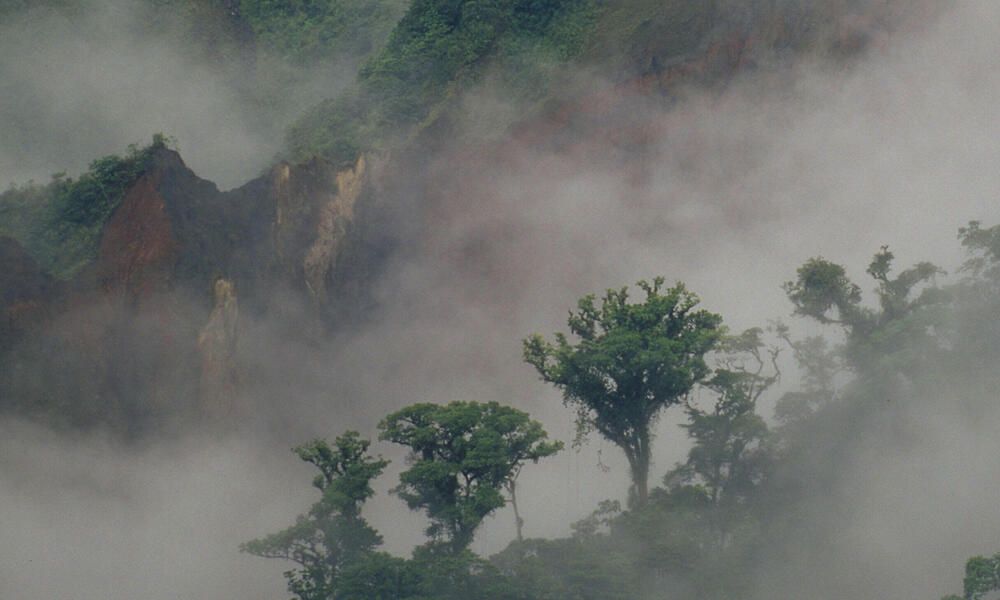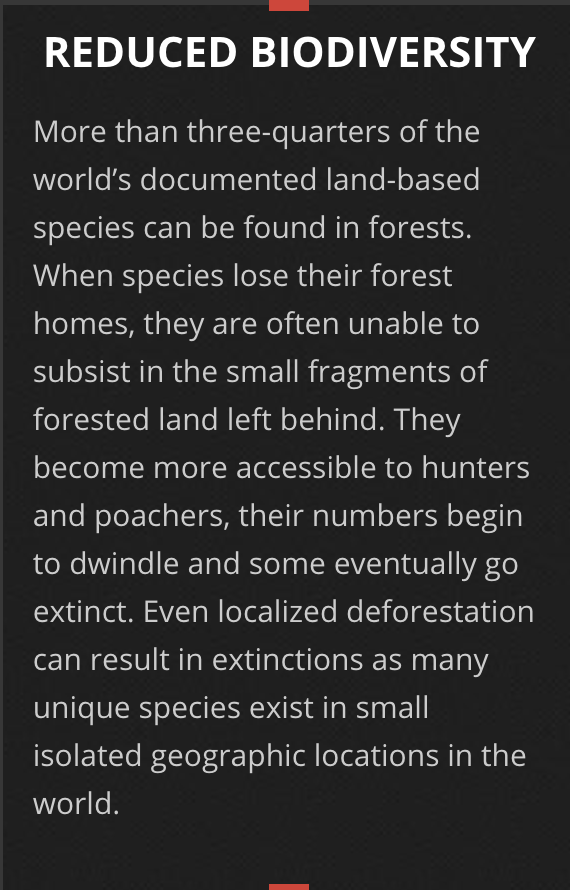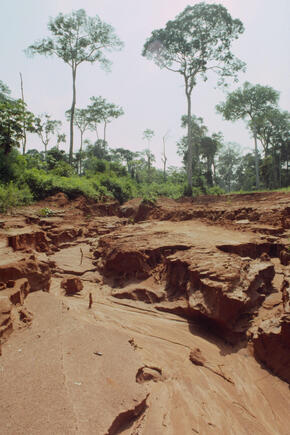
Forests are more than just a collection of trees and other plants—they are integrated ecosystems and home to some of the most diverse life on Earth. They are also major players in the carbon and water cycles that make life possible. When forests are lost or degraded, their destruction sets off a series of changes that affect life both locally and around the world.
Forests are carbon sinks and, therefore, help to mitigate the emission of carbon dioxide and other greenhouse gases. Tropical forests alone hold more than 228 to 247 gigatons of carbon, which is more than seven times the amount emitted each year by human activities. But when forests are cut, burned or otherwise removed they emit carbon instead of absorb carbon. Deforestation and forest degradation are responsible for around 15% of all greenhouse gas emissions. These greenhouse gas emissions contribute to rising temperatures, changes in patterns of weather and water, and an increased frequency of extreme weather events. For example, in Sumatra, rainforests on deep peatlands are being cleared, drained and converted to pulp plantations, contributing to Indonesia’s high greenhouse gas emissions. Changes in climate can affect forest-dwelling creatures by altering their habitats and decreasing availability of food and water. Some will be able to adapt by moving to higher elevations or latitudes, but species losses may occur.
Without trees to anchor fertile soil, erosion can occur and sweep the land into rivers. The agricultural plants that often replace the trees cannot hold onto the soil. Many of these plants—such as coffee, cotton, palm oil, soybean and wheat—can actually exacerbate soil erosion. Scientists have estimated that a third of the world’s arable land has been lost through soil erosion and other types of degradation since 1960. And as fertile soil washes away, agricultural producers move on, clearing more forest and continuing the cycle of soil loss.
1.5 billion people around the world rely on forests for shelter, livelihoods, water, fuel, and food security. And 750 million people (approximately one-fifth of total rural population) live in forests. This includes 60 million indigenous people. But deforestation disrupts the lives of these people, sometimes with devastating consequences. In the Greater Mekong in Southeast Asia, where land tenure systems are weak, deforestation has contributed to social conflict and migration. In Brazil, poor people have been lured from their villages to remote soy plantations where they may be abused and forced, at gunpoint, to work under inhumane conditions.
There is considerable evidence that humans are responsible for disruptions and changes to local and global water cycles. A number of human activities can impact on the water cycle: damming rivers for hydroelectricity, using water for farming, deforestation and the burning of fossil fuels.
Trees play a key role in the local water cycle by helping to keep a balance between the water on land and water in the atmosphere. But when deforestation or degradation occurs, that balance can be thrown off, resulting in changes in precipitation and river flow.
At a local level, the land becomes drier and less stable. When it rains, instead of the water being soaked up, there is increased run-off and leaching. Areas can become more prone to both droughts and flooding, impacting on plants and animals, and also humans living near deforested areas.


